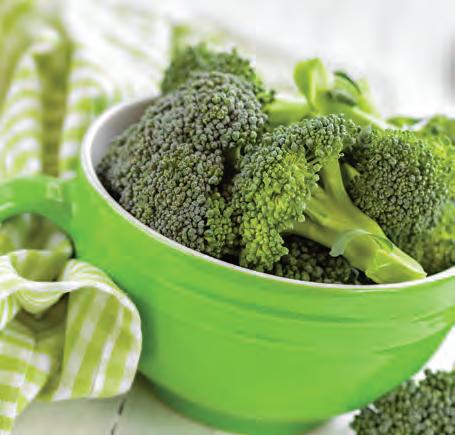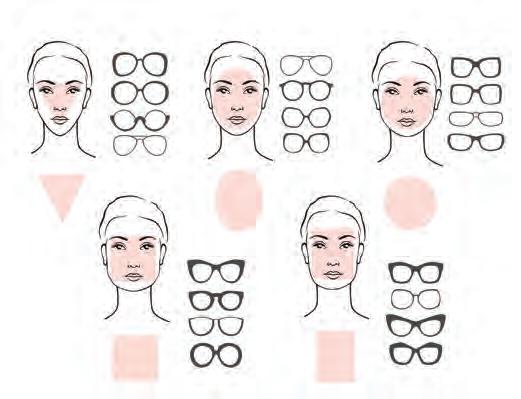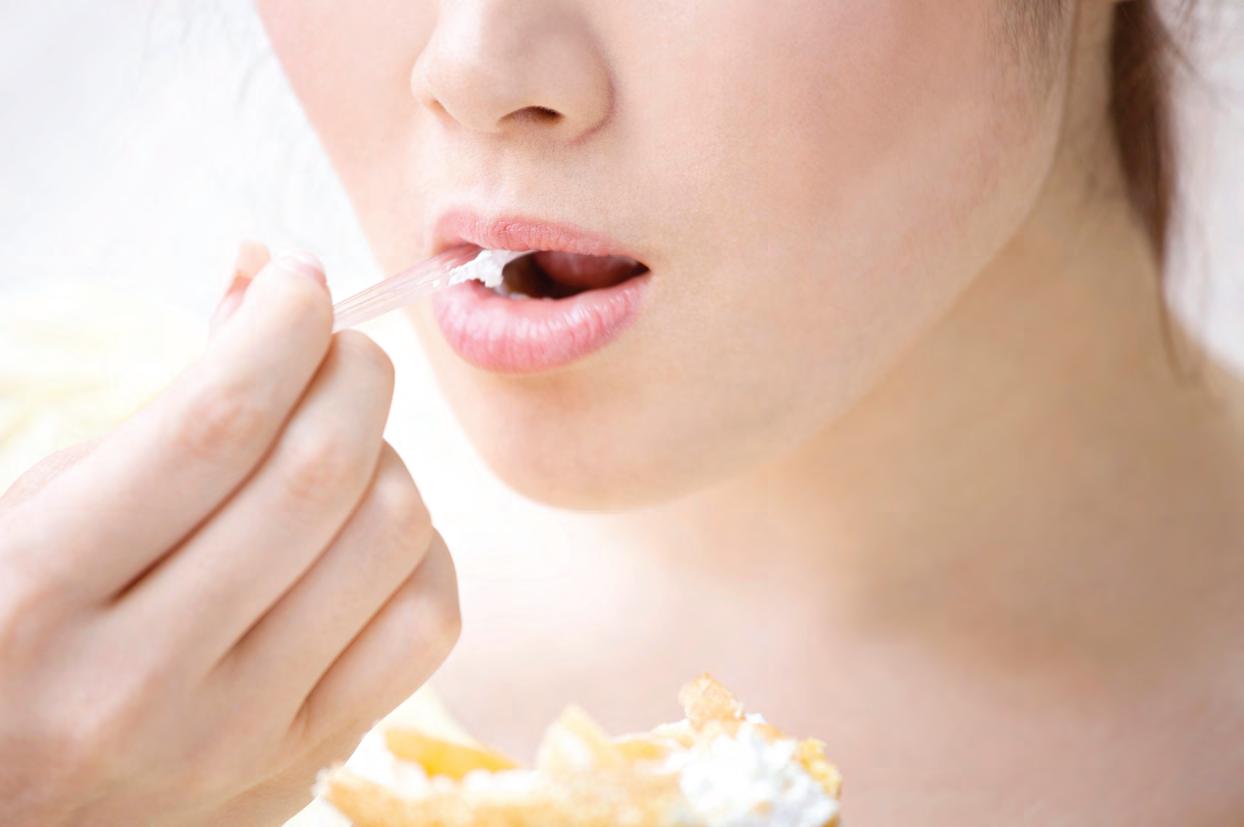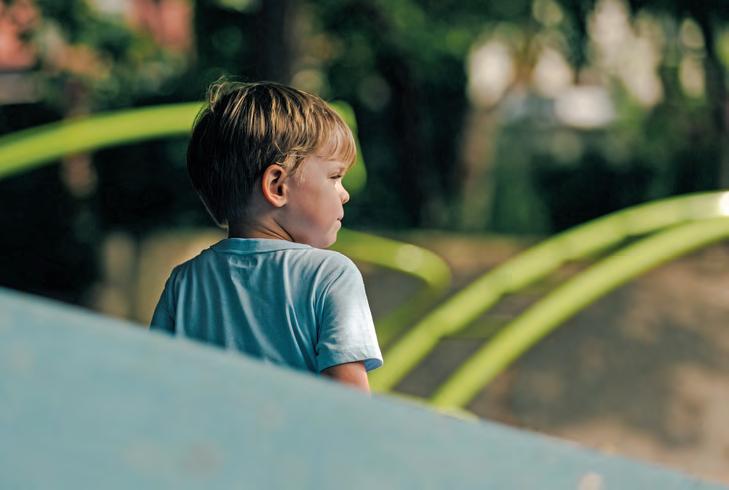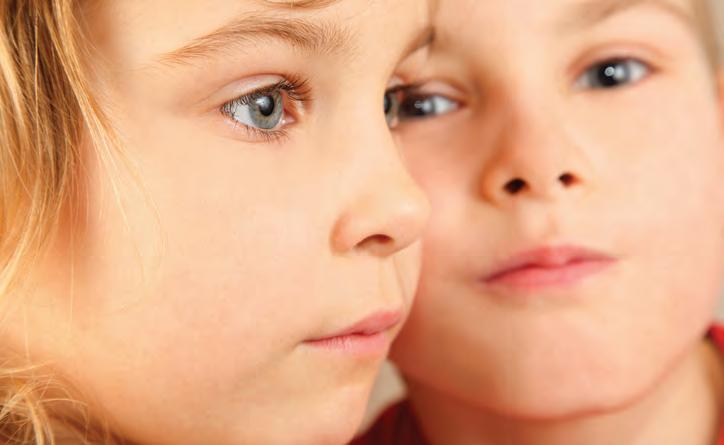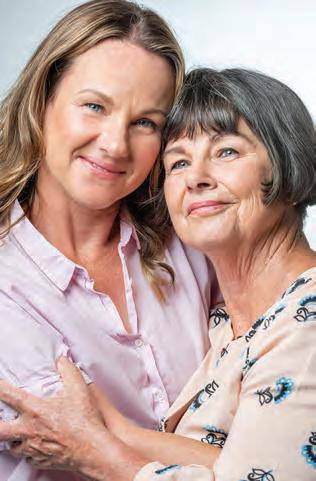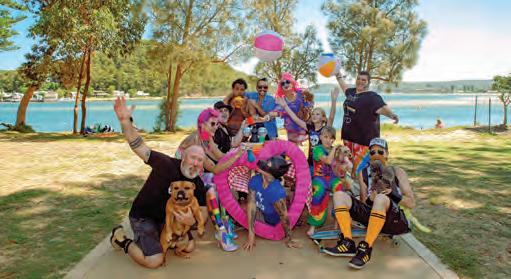
17 minute read
Teeenagers and vegetarian diets – healthy or concerning?
Teenagers and vegetarian diets healthy or concerning?
BY DIANA ARUNDELL – UNIVERSITY QUALIFIED NATUROPATH
There are many reasons why a teenager may choose a vegetarian diet including religious reasons, ethical reasons, a desire to improve well-being, and for some weight loss may be the motivation. For some teenagers the feelings associated with making dietary changes of their own choice brings a sense of personal power and control over their lives. For some this can be the start of healthier eating choices, taking responsibility for their own health and contributing to family meals, whereas for others it can be the start of a slippery slope of restricted eating patterns. If left unnoticed the latter can potentially spiral down the destructive path of disordered eating.
There is a big difference between a healthy vegetarian diet and restricted eating patterns. It’s important to understand why the teenager has chosen to change dietary habits and to really listen so they feel heard about their choices. Keeping communication channels open with teens is essential for healthy ongoing discussions and this initial conversation is an important one for the sharing of feelings both ways. For many busy parents, the initial reaction may be one of stress due to the thought of having to cook separate meals in an already busy household, as well as concerns for adequate nutrition for their teen.
Nutrition is our biggest foundation of health and is especially important in teenagers due to mental, emotional and physical demands on their bodies. A well-balanced vegetarian diet can be very healthy, however it does require education, planning and some effort. Many people embarking on a vegetarian diet simply eliminate meat and in some circumstances all animal products, and don’t consider replacing the animal protein with appropriate vegetarian sources of protein. This includes people who become vegetarians and just eat

vegetables or salad for lunch and dinner
thinking that this is
actually healthy. This ‘meat elimination diet’ may eventually result in fatigue, mineral deficiency and lowered immunity amongst other signs of sub-optimal nutrition. Following an unbalanced vegetarian diet for a few weeks is generally not going to cause any long-term health issues. It is more of a concern if an unbalanced vegetarian diet is maintained for beyond 6-12 months. Clinically these people often present with fatigue, repetitive infections and in women and teens periods may become heavier as iron stores reduce. Not
These are some variations of a vegetarian diet:
Lacto-ovo-vegetarian
Ovo-vegetarian
Pescatarian
Vegan Dairy food (milk, yoghurt, cheese) and eggs are consumed but no animal meat.
Eggs are consumed but no dairy (milk, yoghurt, cheese) or animal meat.
Seafood/fish is consumed but no other meat + Lacto or lacto-ovo
No dairy (milk, yoghurt, cheese), eggs, or animal products are consumed at all.

only does excessive menstrual flow contribute to low iron stores, it can also be a result of low iron stores. A poorly managed vegetarian diet may also lead to suboptimal levels of zinc resulting in lowered immune function and low vitamin B12 levels are also of concern particularly in vegans, as B12 is solely found in animal products. Lacto-ovo vegetarians tend to be less at risk due to their consumption of eggs and dairy products.
Sufficient protein intake is of particular importance in teens due to growing demands on the body. Protein deficiency can result in reduced muscle mass, fatigue, hair loss, poor skin health and lowered immunity. Animal products contain all of the essential amino acids that are required by humans for optimal function, and are therefore considered ‘primary’ or ‘complete’ proteins. They are called essential because we are unable to manufacture them inside the body and therefore they need to be consumed through the diet. Protein does exist in the plant world, however these sources of protein are considered ‘secondary’ or ‘incomplete’ proteins because they do not contain all of the essential amino acids. They may contain most of them, but in order for a complete protein to be consumed and utilised by the body, a number of different vegetarian proteins need to be eaten together to ensure all essential amino acids are provided. This is known as protein combining.
A well-balanced vegetarian diet can give rise to some impressive health benefits. A good vegetarian diet Following is a sample menu of a balanced vegetarian diet which contains a combination of plant based proteins to ensure consumption of all essential amino acids:
Lunch/Dinner
Snacks Oats or muesli with rice/almond and coconut or cow’s milk, chia seeds, linseeds, almonds, yoghurt, berries or eggs on sourdough
Lentils or chickpea patty with rice or as burger, stir fry vegetables with tofu, cashews, sesame seed and rice noodles
Nut spread on rice cakes, fruit with yoghurt sprinkled with almonds, chia seeds or muesli mix. Nut butter/date protein balls
usually involves: an increase in the consumption of antioxidants (Vit C, E, bioflavonoids) which are protective to the cells of the body, an increase in fibre which promotes healthy elimination of cholesterol and reduces the incidence of constipation and other potential diseases of the bowel; is often lower in saturated fats and cholesterol which can lead to a reduced incidence of heart disease and other cardiovascular issues such as high blood pressure and high cholesterol. If your teen wants to embark on a vegetarian diet, a compromise to start with may be to agree on 2-3 wellbalanced vegetarian meals per week and for the teen to contribute to preparing the meal. The rest of the family may benefit from an increased intake of vegetables as many people generally eat too much meat and not enough vegetables. Recently the Australian Heart Foundation released new guidelines regarding eating no more than 350g red meat per week which translates to 1-3 red meat meals per week.
Annual blood tests may be advisable for vegetarians especially vegans, with particular attention being paid to iron levels as well as the ferritin (storage form of iron) – which will give a longer term view on iron levels in the body, and teens with heavy periods should be assessed for iron deficiency. It would also be advisable for vegans to check zinc and B12 levels.
If your teen wants to try a vegetarian diet, it would be beneficial for them to sit with a nutritionist to discuss pros, cons and help create a balanced approach ensuring all nutritional needs are met based on the individual’s current needs. Planning a well-balanced vegetarian diet from the beginning may reduce potentially unhealthy restrictive eating patterns to develop and also to establish if the dietary changes are coming from a balanced, healthy space. Professional advice may also be more openly received by a teenager than advice from a parent.
Diana Arundell is a university-qualified naturopath and consults from her Avoca Naturopath clinic. She has a special interest in fertility and pregnancy health, digestive health, immune function and family wellness programs. She was a nutrition lecturer at Macquarie University for 10 years, and is an accredited Journey Practitioner. For further information please contact Diana Arundell at Avoca Naturopath on 0410 465 900.
What's On across the Coast these school holidays?
We run and support fun school holiday events right across the Coast! Check out What's On: Ÿ for our Youth Ÿ at our Leisure Centres Ÿ at our Town Centres Ÿ across our Libraries Ÿ at Gosford Regional Gallery

School Holidays
Supporting children when a loved one dies

BY SARAH TOLMIE
For more than a decade I have been working with death, grief and end-of-life and the last couple of years my practice has grown and evolved and I am now a fully operational funeral director, as well as being an end-of-life consultant and holistic celebrant.
I spend a lot of time with families at the very worst time of their lives. Death can be an experience where we are exposed to the hardest of emotions. We can feel shock, trauma and distress. We can feel anger, sadness, confusion and great grief.
One of the most challenging and sensitive areas that almost all families will encounter when a death of a loved one occurs is how to tell a child and how to involve and include children in the unfolding response and rituals. Grief is a real and complex emotion that children experience at times of loss and change. The death of a grandparent, parent, sibling or friend is a life changing experience for everyone, especially children.
Sometimes the first instinct for families is to shield a child from what has happened and perhaps even exclude them from last visits and the funeral, thinking it might be too emotional. Please don’t act on this first instinct. In almost all circumstances this is NOT necessary. Death is a natural part of life’s continuum and an essential part of a child’s learning about life, about emotions and about their family. When a death occurs, lean in bravely and share it with your child. For any child and any age, there IS a way to make death safe, supported and understandable. Depending on the age of the child – and the context of the death and who has died – there may just be differences in language and the degree of disclosure and exposure to the dying process and after death activities.
The exception to this, of course, is if a family is in unhealthy anger, turmoil and trauma and there is a lot of disharmony. Under those circumstances it may warrant greater distance and boundaries to protect children from any toxic behaviours.
However, in my experience, for most families, the presence of children during and after death, and at the essential rituals of farewell and celebration, is not
have your party in our PLAYGYM or our entertainers can come to you!


SHOP: Licensed Partyware, DIY Helium Kits, Costume & Party Hire Jumping castles and ball pits 310 Mann Street, Gosford Ph: 4322 4418 www.JJcc.com.au
only a normal and healthy thing for the child, but it can offer essential soothing and grounding for all the family. What becomes very important is the modelling from family. In my work as a death educator and end-oflife consultant I know that the more preparation, support and guidance a family can bring to a loved ones’ dying and death journey, the greater their capacity to meet that profound passage with authentic presence, calm, comfort and develop a language that can be shared across the family. You are providing an emotional foundation for them to begin to register this key experience as it is relayed to them as they grow through language, stories and images.
When talking about death with children the advice is to use real and simple language. Using the word death is encouraged rather than using euphemisms like ‘gone to sleep’ or even ‘passed away’. Death can be explained simply as “their body is no longer alive and they will not be here as part of our family anymore in a way they used to be”. Be patient and explain as best as you can what is occurring and reassure them that despite the sadness and tears, this is a normal part of life and we are all okay within it. If they are part of the tears, allow them to be part of the release after the tears and the closeness and intimacy that follow. Even the laughter, the memories and any ceremony you may hold will give them the whole emotional experience that will result in a renewed sense of security.
I know from my time as a hospital chaplain it is natural and normal for children to be encouraged to visit loved ones in hospital or nursing homes. Children can often become intensely curious about death and what happens to the body. They may ask for details that you may find uncomfortable to explain. These are questions you are best to answer in a straightforward,
gentle and careful manner. They may want to see
the body of the person who has died and continue to need to speak about
the actual event or details of the death for some time after.
Many children, including my own, have even been to viewings. I have directed a home based funeral where a mother had died and her young daughters tended to their mother after death, braiding her hair, painting her nails and picking out clothes for her to wear and putting flowers all around her. They read her poems and played music. They had the time to be in her presence and understand her body had stopped living and were gently paced towards her final departure from the home.

You will know your child best and maybe they might just be your ‘teachers’ when the experience of a death finds your family. They might be the ‘brave’ modelling you need to move through any resistance and fears you may have to face such a huge family event together with greater presence and more capacity than you ever thought possible.
Whatever the age of your child, when they experience a significant death in their lives, make a place in your home where photos of the person who has died are visible, or encourage them to write their thoughts in a journal or book that family members can join in too. These are some ways you can build the relationship to death as a part of life. After death, beyond the shock and grief, the amazing thing is that life really does go on. We can remain in sacred relationship with our loved ones after death and resume into life gently with all the learning, living, loving and laughing that family life brings.
Sarah Tolmie assists people to celebrate, navigate, grow and heal through all their life & love transitions. Her practice focuses on love & relationships, families & children; life success & fulfilment, illness, death & grief. As an Holistic Celebrant Sarah creates profound and meaningful ceremonies for all life & love events. Sarah is also a Marriage Therapist, Bespoke Funeral Director and End-of-Life Consultant. You can visit her website www.sarahtolmie.com.au and Facebook page at Sarah Tolmie – Life & Love.
IS YOUR FAMILY COMPLETE? Have you thought of your options? Have you considered a vasectomy?

30 Renwick Street, Wyoming Phone: 4328 2122
Vasectomies are a permanent and very effective way to stop unwanted pregnancies. They are performed under local anaesthetic and have a quick recovery time. For more information regarding the procedure, fees or any other issues of concern please visit our website or contact our friendly staff. www.cornerfamilysurgery.com.au
0430 286 590 nathalie.roy@lcfclubs.com.au www.lcfclubs.com.au The Fun way to become bilingual! French Spanish Mandarin German for 2-12 year olds • fun before & after-school programs • lots of fun activities, drama, music & games • experienced and enthusiastic teachers • supported by fantastic fun activities online at Babelzone – visit our website for a FREE TRIAL Contact us to start a language program at your kid’s childcare, or a before or after school class at your child’s primary school.

Let’s talk
playspaces

In the last financial year, Council invested over $1.5million to renew 15 playspaces across the region including accessible and all ability features in many facilities to ensure these are spaces for everyone.
Playspaces are places in which we build social networks, create a sense of belonging, keep active and in addition to providing children with a space to have fun whilst developing their social and physical skills.

Here are two recently completed parks Heazlett Park, Avoca Drive, Avoca
This play space was designed to ensure that ‘everyone can play’ with accessible and inclusive features including a variety of surface types to add to the sensory experience of the play area, a premium combination play unit for climbing, sliding and imaginative play, sand play, hammock swing and seat swing set. The existing shade sail has also been incorporated into the new design to complement natural shade provision within the area. Shaun Brinklow Park, Cnr Pampas Ave and Pampas Ave, Copacabana

This new fenced playspace has rubber softfall surfacing and includes a wheelchair accessible carousel, two bay swing set (incorporating the all abilities swing set with a 5 point harness seat and a nest swing), continuous pathways which double as a trike track with transport themed signage and features to encourage imaginative play. There is also a large climbing net, musical elements and a double slide. With its shaded picnic facilities and the planting of advanced shade trees throughout the park, this will be the perfect location for socialising and outdoor play.
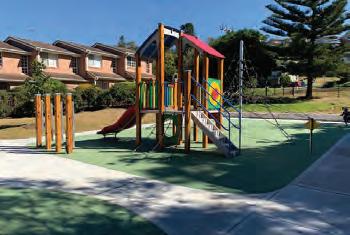
The I Can Read literacy system arose from research undertaken by Australian educational psychologists, it has now gained global success with over 50,000 students in seven countries. I Can Read centres are total literacy centres, covering all aspects of literacy including: • reading • spelling • vocabulary • comprehension • grammar • written composition • public speaking • drama • preparation for kindergarten • preparation for selective schools Boost literacy skills!
Book in for a free assessment at Erina Fair with Clare Egan – MSpeEd (Newcastle) by calling 0438 284 739 For excellence in literacy, always consult professionals.

Designed and supported by educational psychologists. www.icanreadsystem.com
Flipout with Excitement
One bounce and you’ll ‘Flip Out’ with excitement, challenging yourself to greater leaps and bounds. With excitement for all the family, Flip Out is Australia’s largest network of indoor trampoline parks and offers the perfect day out with family and friends.
Flip Out Gosford provides parents and carers with affordable priced party packages to suit not only their budget but also their children’s interest, all year round and any type of weather conditions. We have the best location to host your child’s next birthday. The new owner Blake has plans over the next 12 months to revamp Flip Out Gosford and make it even better than what we all know and love about it already. A few ideas include a new Café look and menu, making Playgroup bigger and better, introducing parkour (freestyle jumping/climbing obstacle) elements into the arena, to add a new style of trampolining and a loyalty system to benefit all customers especially the frequent flippers! Some new features that have already been introduced in the short time include a new online booking system that allows you to book in advance and it details everything we have to offer from jump passes to gift cards to birthday parties, its all there! We have a new digital waiver system to replace the paper ones, so not only good for the environment but super convenient for the returning customers as you only need to fill it out once a year instead of every visit, and some new gaming machines to add a little bit more excitement and colour to the venue!
They always look forward to seeing all the new and returning faces, so pop down and enjoy yourself with friends and family as it’s a great day for everyone.
PARTY PACKAGES FROM






UNLIMITED JUMPING* 1 ADULT +1 CHILD EXTRA CHILD $10 $15 * Subject to availability



